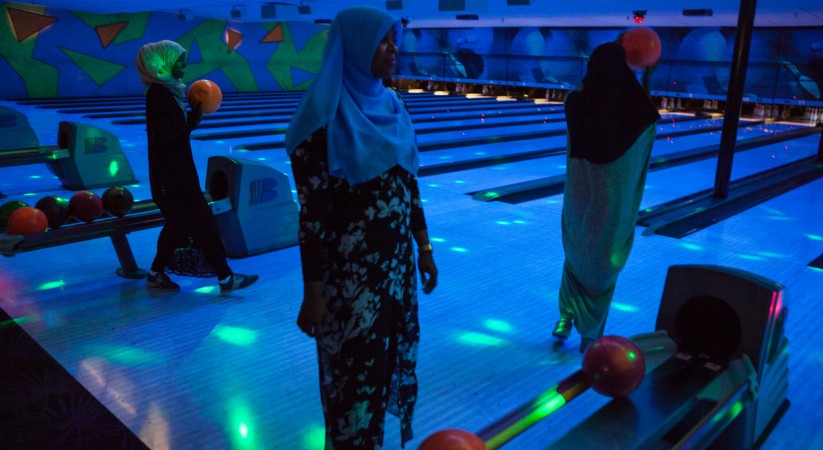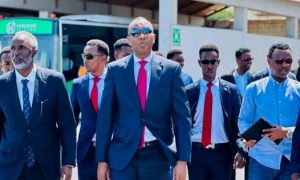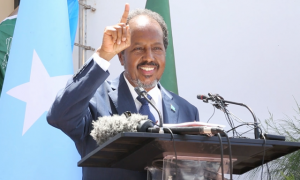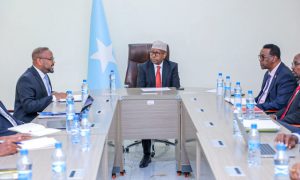
By James Estrin | Arthur Nazaryan wasn’t the first inexperienced photographer to venture into Somalia for a few weeks and barely scratch the surface covering famine and conflict. After working in Mogadishu in 2012, he realized the only way to make meaningful images was to spend much more time there.
But it is expensive for an American photographer to work safely in Mogadishu, and he lacked the money for an extended stay. He was, however, determined to document the Somali people, whom he admired, so he charted a different course: He went to Minneapolis, which is home to some 30,000 Somalis, most of whom came as refugees since 1990.
Mr. Nazaryan arrived there a few weeks after six young Somali men were arrested, charged with trying to join the Islamic State terrorist group. From 2007 to 2009 more than a dozen young Somalis left the Minneapolis area to join the Shabab, an Islamist militant group fighting in Somalia.

Saciido Shaie rushing to go shopping with her children and drop them off at home before attending a board meeting for her nonprofit organization, the Ummah Project.Credit Arthur Nazaryan
Many people were hesitant to be photographed, he said, assuming immediately that he — like other journalists — was there to depict them with “cartoonish stereotypes” as a community of extremists.
“They are only portrayed as pirates, terrorists or victims of war and famine in Africa and as ISIS recruits or refugees leeching off of the system in the United States,” said Mr. Nazaryan, 31. “In reality they are hardworking, resourceful people who have managed terrible circumstances with incredible resilience and grace. And just a handful of Somalis in Minnesota have any interest in supporting ISIS.”
Mr. Nazaryan began photographing in a charter public high school, which was about 75 percent Somali. Most of the students seemed to have adapted to America — listening to hip-hop and using social media while staying true to their traditional culture, he said. One day he was photographing Somalis dancing at a graduation party on a boat and the next day they were praying at a mosque. While the young people seemed quite American to Mr. Nazaryan, they tended to hang out with each other, often speaking the Somali language.
“They’re definitely very proud to be Somali,” he said. “And they’re deeply religious.”

Mr. Nazaryan photographed the lifestyles of young Somalis in their 20s as well as at weddings, cultural events, businesses and a Somali independence day festival.
Although at first most everyone he met assumed he was there solely because of the ISIS arrests, some warmed to him after they learned he had been to Somalia and knew the places they hailed from. Others just got used to seeing him in their community.
Mr. Nazaryan is himself an immigrant from Russia who moved to Hartford with his parents when he was 5. His experience was quite different from that of the Somali youths he photographed. While there were stereotypes of Russians that he had to confront, he said, the Somali immigrants are “dealing with a mountain of stigma.”
“The most stark difference is the Russian community is not being scrutinized by the F.B.I. and the government in the same way,” he said. “There’s a very active fear of paid F.B.I. informants trying to get Somali kids in trouble. And they are in the age of Donald Trump wanting to bar Muslims from coming to the United States.”

Abdikadir Hassan sitting with his friend Sabah Hassan at a diner in Minneapolis, where they discussed whether it was O.K. for the white mayor of the city to wear a hijab to a Somali event.Credit Arthur Nazaryan
.
.
____________________________
_____________________________________________________________________________________
Xafiiska Wararka Qaranimo Online | Mogadishu, Somalia
_____________________________________________________________________________________Advertisement
_____________________________________________________________________________________







